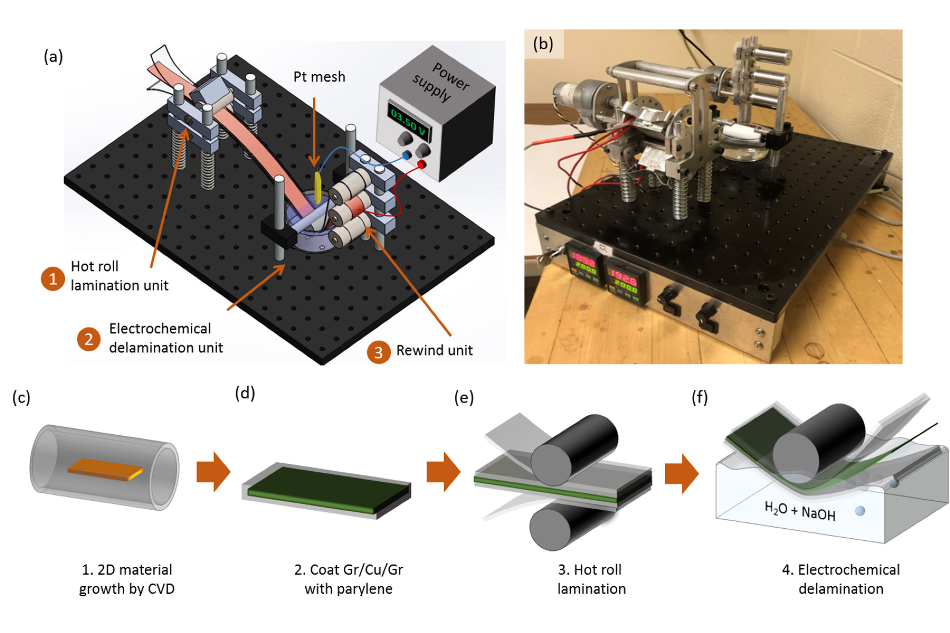All pastes are analyzed by. Since its initial development copper indium diselenide CuInSe 2 thin-film technology has been considered promising for solar cells because of its favorable electronic and optical properties.

Indium Tin Oxide An Overview Sciencedirect Topics
It is one of the principal oxides of copper the other being or copperII oxide or cupric oxide CuO.

Manufacture a solar cell using indium tin oxide cuprous oxide. Cuprous oxide Cu 2 O is an attractive p-type oxide for photoelectrochemical hydrogen production with a direct bandgap of 2 eV and a corresponding theoretical photocurrent of 147. Inverted polymer Solar Cells of the classical poly 3-hexylthiophene P3HT66-phenyl-Csub 61butyric acid methyl ester PCsub 61BM blend on indium tin oxide substrates were fabricated which shows improved device performance by using a facile solutionprocessed ZnO-polyelectrolytes poly diallyldimethylammonium chloride PDADMAC Poly acrylic acid sodium salt PAS poly 4. A Review on Cu2O and CuI-Based p-Type Semiconducting Transparent Oxide Materials.
Cuprous oxide zinc oxide piezoelectric nanogenerator antimony 1. CopperI oxide is found as the reddish mineral cuprite. Indium tin oxide ITO with a 4 eV band gap is a n-type semiconductor but it is not a viable cathodic alternative in a MFC for it can only absorb UV light and electrons are not driven to the cathode.
A layer of indium oxide on a silicon substrate can be deposited from an indium trichloride solution a method useful for manufacture of solar cells. In the first stage n-type cuprous oxide was deposited on the FTO glass substrate using a solution with. Firstly the OPAL 2 simulation was performed to optimize the values of the photo generation-current density of ITOITOSi device structures.
Cu-Pt core-shell nanowire networks can thus replace more expensive transparent electrodes made from indium tin oxide ITO in photoelectrolysis cells and dye sensitized solar cells. Flexible solar cells Indium tin oxide ITO Work function Conversion efficiencies abstract In this paper surface treatments on polyethylene terephthalate with polymeric hard coating PET-HC substrates are described. Another promising material for implementation in STHSC is cuprous oxide Cu 2 O.
The most interesting feature of this method is that both n-type and p-. Promising Candidates for New Generation Oxide Based Electronics By Arghya Narayan Banerjee Fabrication of ZnOCu2O heterojunctions in atmospheric conditions. CopperI oxide or cuprous oxide is the inorganic compound with the formula Cu 2 O.
The indium tin oxide ITO layers have good optical transmissions more than 85 and high electrical conductivities approximately 310 3 Ω -1 cm -1. When heated to 700 C indiumIII oxide forms In 2 O called indiumI oxide or indium suboxide at 2000 C it. Cuprous Oxide Cu 2 O.
So Cu2O 22 eV can be evaporated onto indium tin oxide ITO and can act as. Indium tin oxide ITO is predominantly used. Abstract Tin-doped about 3 indium oxide films 80 nm thick were deposited by magnetron sputtering and were found to form a barrier on Cu2O crystals of comparable or superior quality to that of copper.
The compound can appear either yellow or red depending on the size of the particles. In preparing tin oxide and indium tin oxide-silicon heterojunction solar cells by electron beam sublimation of the oxide and subsequent deposition thereof on the silicon the engineering efficiency of the resultant cell is enhanced by depositing the oxide at a predetermined favorable angle of incidence. A list of current projects summary of the benefits and discussion on the production and manufacturing of this solar technology are below.
Finding transparent metals which are ideal materials for use in such technologies as touch screens and solar cells is not easy thing to do. Ad Improve Your Business ROI - Get A Better Deal On Solar Cell Manufacture. It was later found that by substituting gallium Ga for indium In the.
Dutch researchers at Eindhoven University of Technology have developed a replacement for indium tin oxide ITO an important material used in. Conductivity in the cell by indium tin oxide ITO was replaced by a less conductive material ie. The theoretical limit of the conversion efficiency for a solar cell based on Cu 2 O.
ITO Cu 2 O front cells were studied. Cu 2 O has several properties that make it an attractive absorbing layer in a thin-film solar cell devices. The effect of the contact angle on the treatment is first investigated.
This semiconducting metal oxide has a high optical absorption is non-toxic and has the potential for low production cost 9 10. The deposition was carried out in two stages. The capability for contact formation on indium tin oxide layers of different low-temperature screen printing silver pastes after thermal curing and photonic sintering is evaluated in detail.
Cuprous or copper oxide Cu 2 O was one of the first semiconductors studied 1 and one of the first to be used in photovoltaic devices 2. The 80-nm-thick indium tin oxide layers used in this study are sputtered at three different oxygen gas flows and consequently differ by their electrical and optical properties. Oindium tin oxide with a Cu 2 OSb cuprous oxide with a small amount of antimony layer of sufficient thickness 3 μm exhibit an extraordinarily high piezoelectric potential of 09 V and a maximum output current density of 31 μAcm2.
This red-coloured solid is a component of some antifouling paints. In this literature we discussed the effect of anti-reflection coating of silicon heterojunction SHJ solar cells with different characteristics of double layered indium tin oxide ITOITO structure. A p-n homo-junction copper I oxide cuprous oxide Cu 2 O solar cell was potentio-statically electro-deposited on an FTO Fluorine Tin Oxide-coated glass substrate from a solution containing 04M copper II sulfate and 3M lactic acid.
The effect of bath temperature and pH was also studied and was shown that by increasing both of these parameters the film thickness was increased.

Indium Tin Oxide Nanowires Manufactured Via Printing And Laser Irradiation Sciencedirect

How Transparent Graphene Electrodes Could Aid Solar Cell Generation
Tidak ada komentar